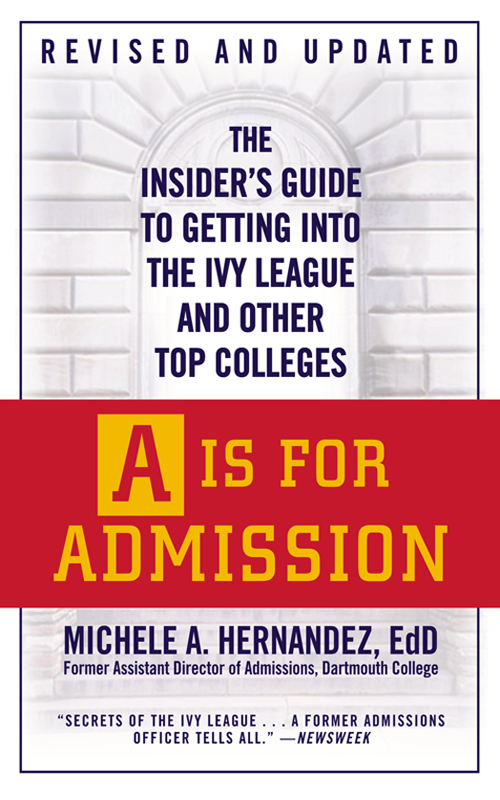Copyright 1997, 2009 by Michele A. Hernndez
Preface copyright 2009 by Michele A. Hernndez
All rights reserved. Except as permitted under the U.S. Copyright Act of 1976, no part of this publication may be reproduced, distributed, or transmitted in any form or by any means, or stored in a database or retrieval system, without the prior written permission of the publisher.
Grand Central Publishing
Hachette Book Group
237 Park Avenue
New York, NY 10017
Visit our Website at www.HachetteBookGroup.com.
www.twitter.com/grandcentralpub
First eBook Edition: December 2010
Grand Central Publishing is a division of Hachette Book Group, Inc.
The Grand Central Publishing name and logo is a trademark of Hachette Book Group, Inc.
The publisher is not responsible for websites (or their contents) that are not owned by the publisher.
ISBN: 978-1-455-50189-2
A IS FOR ADMISSION addresses virtually every issue you have, including:
What is the AI?The Academic Index is the trade secret of certain Ivy League admissions committees: Its a precise mathematical formula thats used routinely to rank most applicants.
Do minority students really have a better-than-average chance of getting into an Ivy League college?A IS FOR ADMISSION explains how minority applicants are actually gauged.
Are certain applications tagged for special consideration by the admissions staff?Absolutely. Find out whether your profile fits into one of these privileged categories.
How are essays and interviews appraised?Here are the criteria for powerful, winning essays and instructive advice for interviews.
A IS FOR ADMISSION also tells you if going to an elite private schoolor a public high schoolwill help you, whether where you live makes a difference, which high schools have the highest acceptance rates, your odds for acceptance if youre deferred or wait-listed by a top school, and much more.
Just about anything you would need to know to be accepted into an Ivy League school can be found in this very detailed, very specific volume Hernndez knows what shes talking about.
Library Journal
An illuminating insiders look lively and loaded with facts and examples Hernndez is well qualified For those applying to the Ivies and similarly competitive colleges, this will be the most valuable book you can read.
Chattanooga Times
In a tale that reads like a gripping New York Times bestseller, Hernndez objectively and thoroughly reveals how the admissions process works a must-read.
Dartmouth Campus Daily
College-bound students of all aspirations can benefit from her inside dope.
Dallas Morning News
Gives experienced, practical insight into a process as mysterious as a conclave of criminals.
Booklist
Most usefully, Hernndez tells students how to present themselves in the strongest light.
Dartmouth Alumni Magazine
An invaluable tool.
Sullivan County Democrat
Particularly interesting.
Hartford Courant
Details the inner workings of admissions offices.
Atlanta Journal-Constitution
To my beloved husband, Bruce, and to
my sweet children, Alexia and Ian.
Thanks to everyone at Dartmouth, past and present, who helped out with this book; my parents, Henry and Cynthia, who have been ever supportive of my efforts; my loving husband, Bruce; my children; and all my friends and family members. Of course, thanks to my golden retrievers, Harris and Bree, who are often curled up at my feet while Im writing. Thanks are also due to editor extraordinaire, Rick Wolff; to my agent, Robin Straus; to my copy editor, Karen P. Thompson; and to my colleague Mimi Doe and her family, who have given me the gift of friendship and camaraderie and have made Application Boot Camp a practical way to reach out to more students.
The content of this book is based upon my years as an admissions officer at Dartmouth College and my ten years of experience as a private admissions consultant. In that capacity, I read thousands of applications, and had a front-row seat in seeing how the Ivy League admissions process works.
All of the student essays, applicant profiles, and case studies cited within are based on composites of the scores of applications that have come across my admissions desk. None are quoted directly in this book.
A Is for Admission has been a consistent top seller in the college admissions field since its original publication in 1997. Two years later, in 1999, the paperback was released with minor updates. In honor of its tenth anniversary, my editor recently asked me to look through the book in order to see whether I might add any updates that would make it just as timely today as it was in 1997. At first I demurred, thinking that Id have to dedicate a year or more to reworking each chapter. Then the oddest thing happened: I sat down to reread the original book and realized that despite the increased number of applicants to top colleges, very little in the admission scene has actually changed! Sure, more colleges take the common application and more applicants from more high schools and more countries apply to top colleges every year, but in terms of the substance of selectivity, colleges have not made any major substantial changes to their admissions policies despite all the calls for reform from both me and scores of others. This perhaps is a sign of how slowly things change in the world of education, or a reflection of the basic fact that top colleges, once they have handpicked their choices for special cases (legacies, minorities, recruited athletes, development cases, etc.), still rely largely on test scores, grades, and academic awards and accomplishments to pick the rest of the class by merit. Though the mechanics may shift slightly as far as the Academic Index is concerned, the bottom line is that scores, grades and rank, and academic achievements still are the deciding factors and the criteria for successful applicants. The actual AI is not as central as it used to be, but the factors that make up the formula still are critical in the admissions process.
With an eye toward updating things that were just plain wrong or no longer current, I have gone through the book with a fine-tooth comb and made the necessary changes. This new edition contains all the latest data as far as numbers of applicants, college rankings, new early-admissions policies, and formula shifts that were available prior to publication. Please note that since I no longer work in an admissions office, I do not have access to new admissions numbers (that information is proprietary), but as a Dartmouth interviewer and full-time college consultant, I can assert with confidence that acceptance rates have not changed substantially for specific tagged applicants since I left admissions. In the intervening decade, my work has shifted from admissions officer to private college consultant, in which capacity I have helped students gain admittance to all the top colleges from Dartmouth, Yale, Princeton, and Harvard to great liberal arts colleges like Williams, Amherst, Swarthmore, and Wellesley. As I said earlier, the biggest change in admissions has not been a shift of policy or procedure, but rather a sea change in the sheer numbers of applicants and more generous financial aid for the middle class. Therefore, academic 8s and 9s on the 19 scale no longer are accepted at such high rates as before, as there are more of them than ever applying to top collegesin other words, in addition to high scores and high grades, you need even


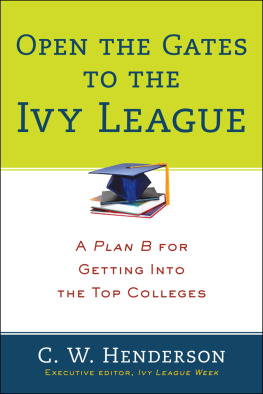
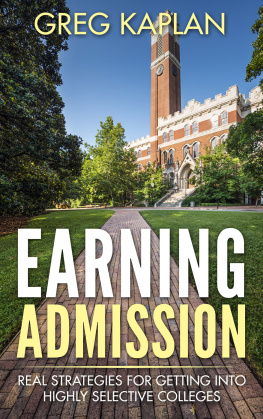
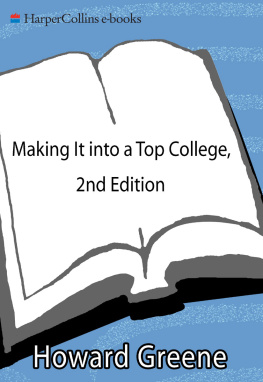

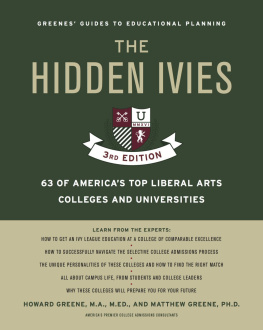
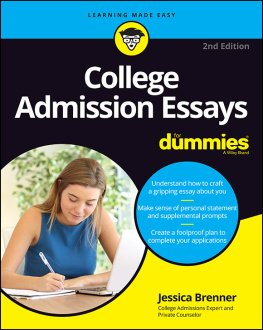
![Reding - Grads Guide to Graduate Admissions Essays] : Examples from Real Students Who Got into Top Schools](/uploads/posts/book/101661/thumbs/reding-grad-s-guide-to-graduate-admissions.jpg)
